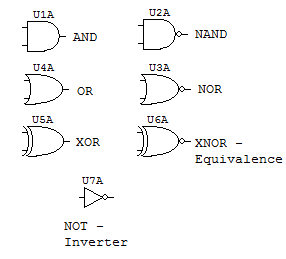Electronic Circuits
This hub is a little introduction about electronic circuits, their design and implementation.
Electronics are the branch of physics that deal with moving electrons. Similar in many ways to electricity, the study of electronics takes a different approach to the subject. They both deal with electrons and their effects, but electronics are dedicated to the flow of electronics in semiconductor materials.
Semiconductors are materials that conduct electricity, but not as easily as metals or ionized materials, they are the basic building blocks of electronic components.
Basic Electronic Components
- Diode - The most basic semiconductor component, it is made of one layer of positive or p-type silicon and another layer of negative or n-type silicon. When the two layers are joined to create the diode they acquire the property of only allowing current to flow one direction but not the other.
- Transistor - The basis of most electronic, the invention of the transisrtor allowed the creation of smaller circuits, replacing the big vacuum tubes that were used earlier. The transistor consists of three alternating layers of doped silicon either P-N-P or N-P-N.
- Resistor - This component limits the flow of current in a circuit, it is used as simple circuit protection to avoid short circuits and also it is needed in many component configurations.
- Capacitor - This device is capable of storing electric charge, it also has a peculiar characteristic of behaving somewhat like a resistor in alternatiing current, which makes it useful in audio and radio filters. It is also used in power sources

Basics of Electronic Circuits
Electronic circuits require some basic building blocks to make. The most important is the power source, it provides the energy needed to create a flow of electrons that will make the circuit work. It also needs components to take advantage of that flow of electrons to make some work like turning on a light, making sound or moving a motor.
The most basic of circuits consist of a battery and a resistor, this creates a flow of electrons that passes through the resistor. The "work" the resistor does is generate heat.
Electronic circuits usually are not that simple, in fact many modern circuits have millions of components. Circuits are only useful if they have something to control, like a motor, a screen or other transducer.
Some simple projects include a light dimmer, acoustic tone generator, or motor speed controller.
Some books to get started in electronics
Digital electronics
Digital electronics are a branch of electronics that use building blocks called logic gates to work. Logic gates work with only two voltage values that represent 1 and 0, ON and OFF or HIGH and LOW.
Digital electronics have the advantage of being predictable, reliable and some also programmable. These programmable devices benefit from the versatility of programming, when needded for another a pllication the device is simply reprogrammed to suit that purpose.
Digital systems are the most common in consumer electronics because of the ability to pack large amounts of gates in a small package, most devices like cell phones and computers have IC (Integrated Circuits) that contain millions of gates in chips the size of a nickel.
Basic Logic Gates
- AND - This gate performs a logical AND operation, meaning it will only output 1 when all its inputs are 1.
- OR - This gate is a logical OR, output 1 when either of its inputs are 1
- NOT - This gate is logical negation, will output 1 when the input is 0 and viceversa.
There are also compound gates, that are a gate with a negation at its output. Exclusive or is a gate created with AND, OR and NOT gates.
- NAND - NegatedAND, will output when 0 when its inputs are 1, output 1 otherwise
- NOR - NegatedOR, will output 0 when either input is 1, output 1 otherwise
- XOR - eXclusiveOR, will output 1 when either of its inputs is 1, but not if two or more are 1 at the same time.
- XNOR or Equivalence - This gate is a negated XOR, will output 1 only if all inputs are equal, either all 0 or all 1.










